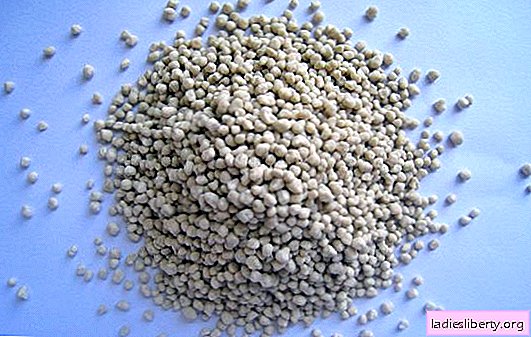
Modern man in everyday life cannot do without chemistry. And it often happens that there is no time to look at what products are consumed and used in everyday life.
Allergies, low immunity, and other health problems may be due to phosphate intoxication. Not to mention the harsh ecological environment.
What are phosphates and where do they come from
Phosphates are inorganic chemical compounds that are formed from phosphoric acid and metals. There are many varieties of phosphates, and their scope begins with the food industry and ends with the smelting of metals.
In everyday life, a person meets phosphates in food, as well as during washing or washing dishes, that is, in contact with household chemicals. Most often, phosphates are presented in the form of three compounds - calcium phosphate (Ca3 (PO4) 2), potassium orthophosphate (K3PO4) and sodium phosphate (Na3PO4).
They can be found in sausage, cheese (add for homogeneity), baking, cakes (baking powder for dough), and in other food products as a preservative. In household chemicals, phosphates are added to detergents, powders, shampoos, etc. as a water softener. Moreover, there is much more phosphate in washing powders than indicated on the packaging.
Phosphates are naturally present in foods such as meat and nuts, but are mainly excreted by the body. But artificial phosphate salts are different.
What is the harm from phosphate?
Impact on human health
It has long been known that these substances pose a serious danger to the health of people, especially those who suffer from kidney failure. For a long time, doctors warned of the danger of too much phosphate in the blood. Several studies have already shown that people with kidney disease are at an increased risk of death. Since damaged kidneys can no longer excrete certain substances, such as, for example, phosphates. They accumulate in the blood and lie in the vessels and soft tissues.
Too much phosphate in the blood increases the risk of death.
Nevertheless, even healthy people are at risk. Several studies prove this. In healthy people, the phosphates that are in the blood are excreted through the kidneys. But the more phosphates a person consumes, the faster the kidney is overexerted and loses this ability. As a result, there is an increased level of phosphates in the blood, vascular damage (their inner walls change and calcify), as well as the heart. In this case, the risk of stroke or heart attack increases significantly.
The cardiovascular system is not the only one suffering from phosphorus compounds. Bones are also at risk for the simple reason that phosphates release and leach calcium from them. As a result, bones lose minerals and become brittle, which can lead to osteoporosis, as well as an increased risk of fractures with significant loads.
According to studies, an adult can consume a maximum of 700 mg of phosphate per day. Unfortunately, even if you want to reduce their use, it will be almost impossible. For example, frozen pizza often contains three times the recommended rate of phosphate. Fast foods and sugary soft drinks literally flood the body with artificial phosphates.
The danger is that artificial phosphates are freely dissolved and absorbed by the body by almost 100%. The automatic barrier to eliminate excess, which serves to regulate natural phosphates, does not work here. The body absorbs much more than it can handle.
Also, phosphates can enter the human body through the skin, disrupting the acid-base balance in the cells. The consequence is dermatological diseases and accelerated skin aging. In addition, phosphates thus affect human blood - they change the hemoglobin content, serum density and the amount of protein. Which in turn leads to disruption of the liver, muscles, severe poisoning, metabolic disorders, exacerbation of chronic diseases.
Impact on the environment and nature
Gardeners know that phosphates are essential for plants as fertilizers. Phosphates themselves also act in water bodies, accelerating the growth of algae. As a result of rapid growth, aquatic vegetation absorbs a significant amount of oxygen dissolved in water. For this reason, the death and transformation of lakes into swamps, pesticides of fish, animals, etc., can be observed. In the end, water bodies are completely overgrown.
Phosphates get into reservoirs from the fields, as well as through wastewater, which is treated at the sewage treatment plant with an active mule. Active mules are microorganisms, and they cannot cope with the huge flow of phosphates from cities and die. As a result, phosphate compounds are not completely removed from wastewater and end up in water bodies.
From the "invasion of algae" and the ecological disaster of the country and reservoirs of the middle climatic zone, only an insufficient amount of heat and light saves, which comes in the cold season.
How to reduce the use and harm of phosphates for yourself and the environment
Phosphorus compounds are not always mentioned on open packaging. This is simply not entirely beneficial for the manufacturer, so they are often hidden behind numbers with the index "E":
• E338 (phosphoric acid);
• E339 (sodium phosphate);
• E340 (potassium phosphate);
• E341 (calcium phosphate);
• E343 (magnesium phosphate);
• E450 (diphosphate);
• E451 (triphosphate);
• E452 (polyphosphate);
• E442 (ammonium salts of phosphatidyl acid);
• E541 (acid sodium aluminophosphate);
• E1410 (mono-starch phosphate);
• E1412 (dical starch phosphate);
• E1413 (phosphated starch phosphate);
• E1414 (acetylated starch);
• E1442 (hydroxypropyl dicramphosphate).
They also hide behind the terms "acidity regulator." On sausage or cheese products there are only small signs with the words “contains phosphate”. And if they are used in food production only as adjuvants or are part of an ingredient - as in frozen pizza cheese - they may not be mentioned in the final product. Therefore, it is difficult for the consumer to identify them as such. Thus, artificial phosphates also harm human health.
Refuse ready-to-eat foods and fast food. Pay attention to the above numbers on the labels and stay away from such products.
As for household chemicals, use environmental “mild”, gentle, phosphate-free detergents and powders with a low content of surface-active substances (surfactants). In such products, the concentration of surfactants is significantly reduced, there is no phosphate at all, and the washing properties are not inferior to chemistry with phosphates. The only drawback is the price. But the negative effect on the body is almost absent.
It is possible to reduce the eutrophication (overgrowing, waterlogging) of reservoirs using precisely phosphate-free detergents and powders, as well as proper agricultural techniques in fields and gardens.
The situation with phosphates in the post-Soviet space is approaching critical. Without the adoption of measures at the government level, the adoption of relevant norms and laws, it will be significantly exacerbated. But man is a creature with the right to choose, and he himself is able to choose how and in which environment he lives. Be careful, check the composition of the products that you use and consume. Take care of yourself, your environment and the future of your children.











